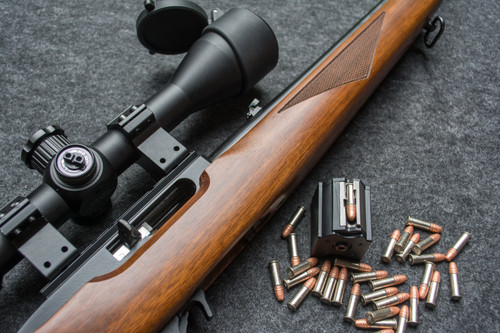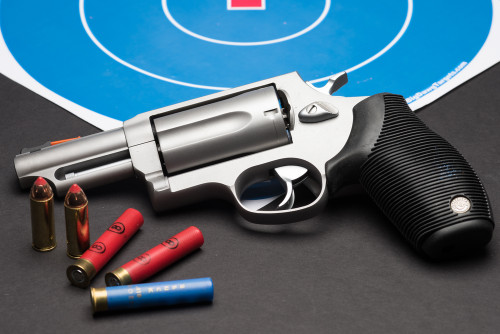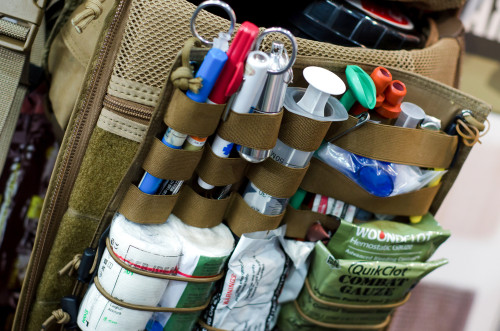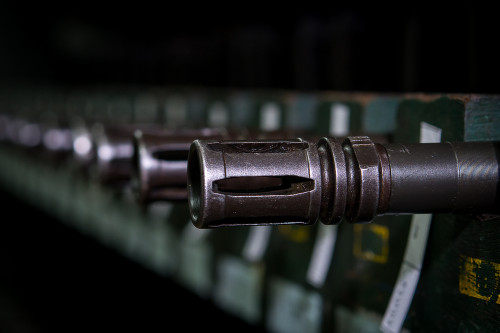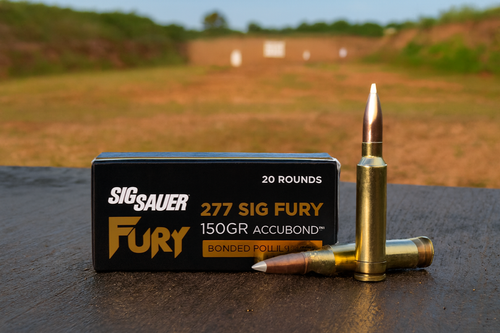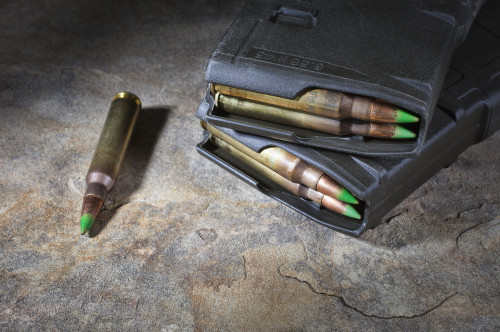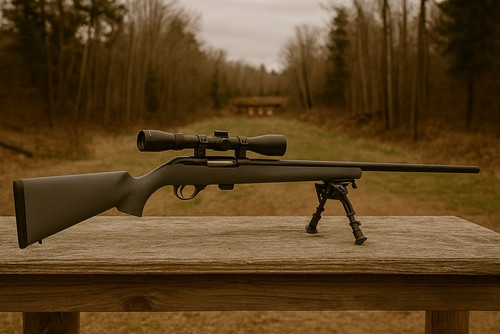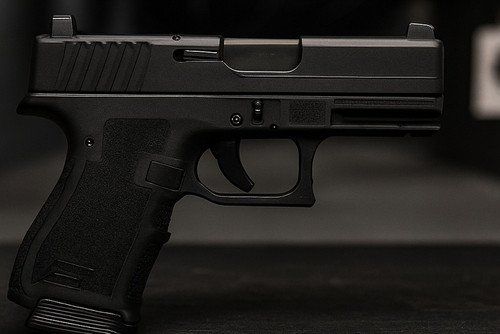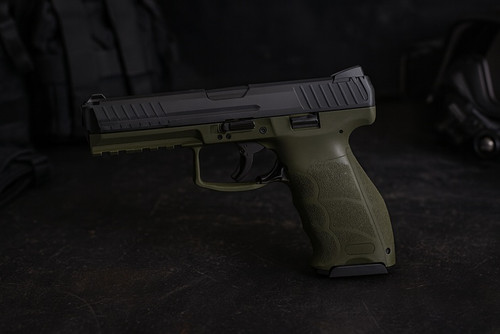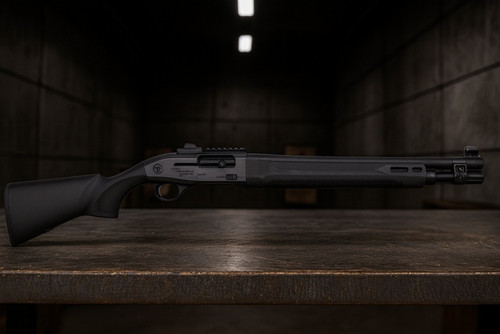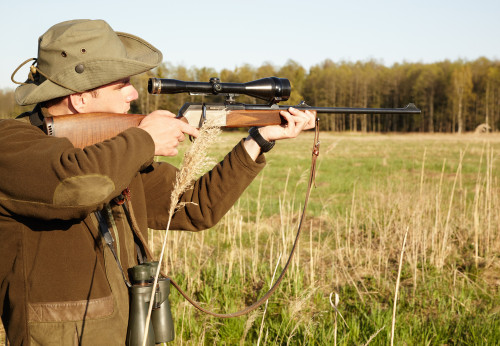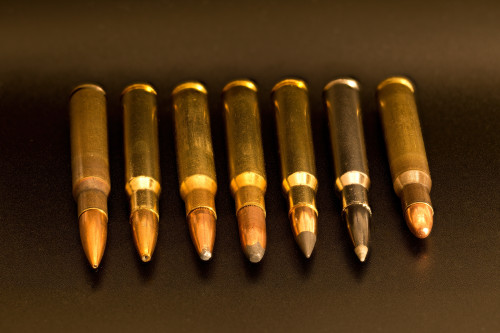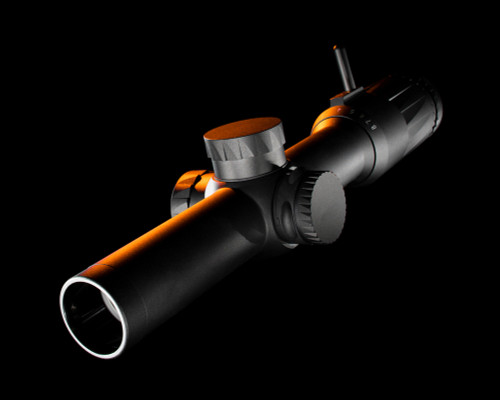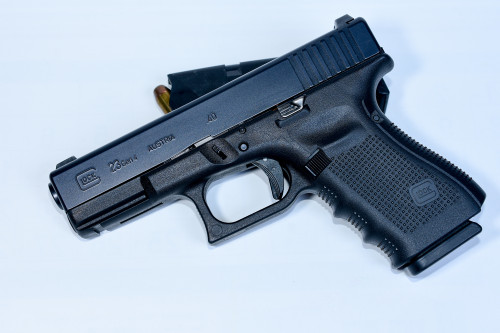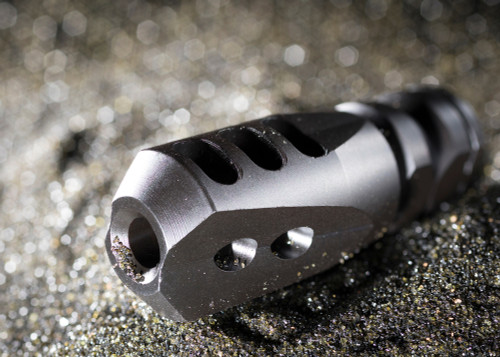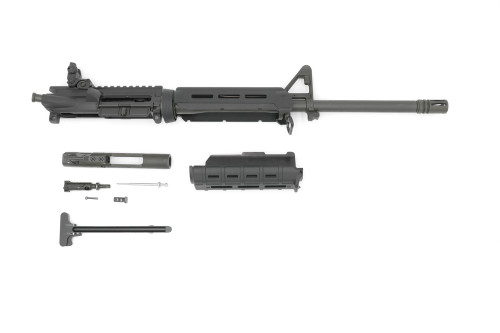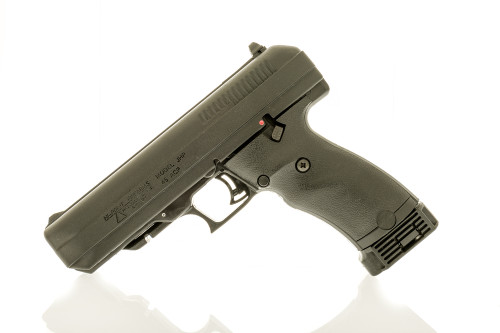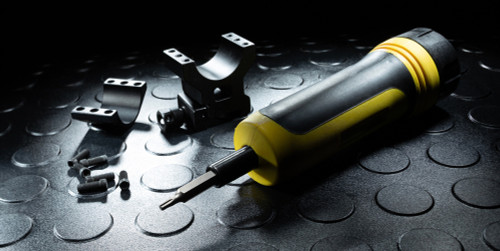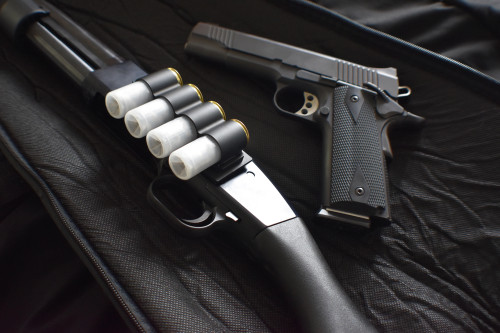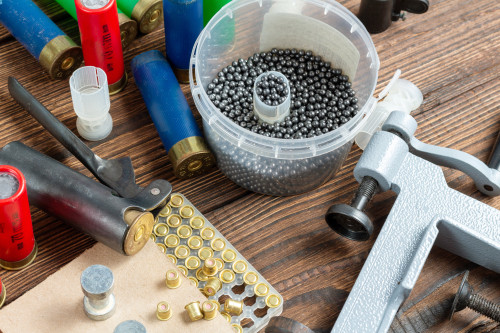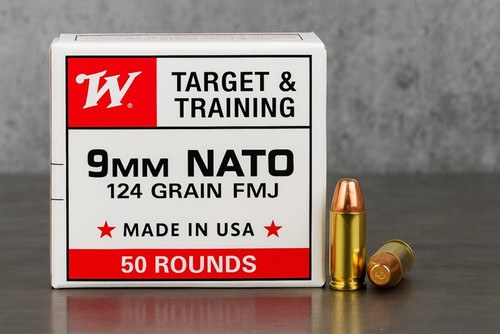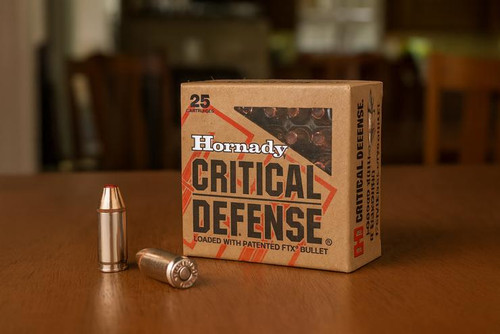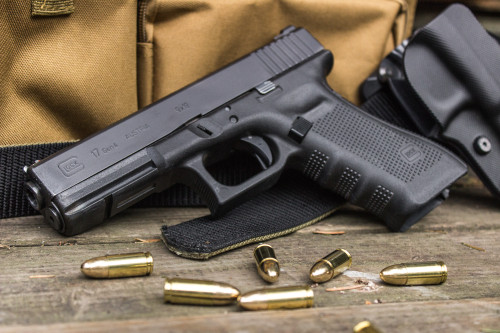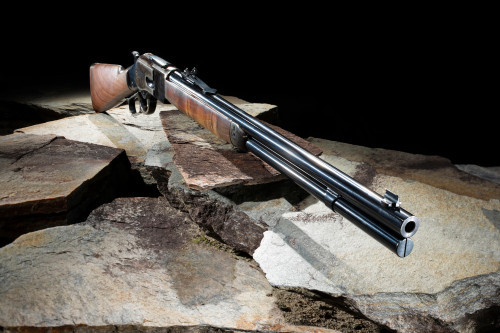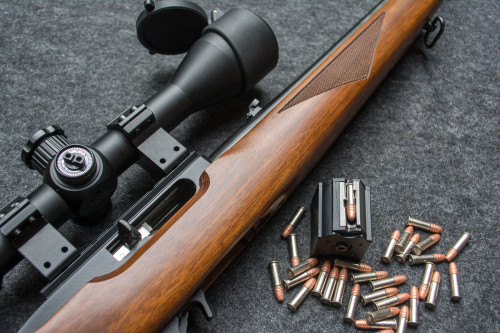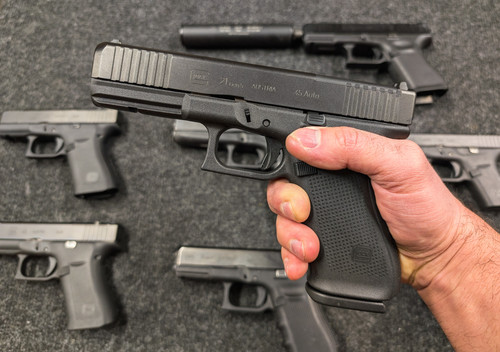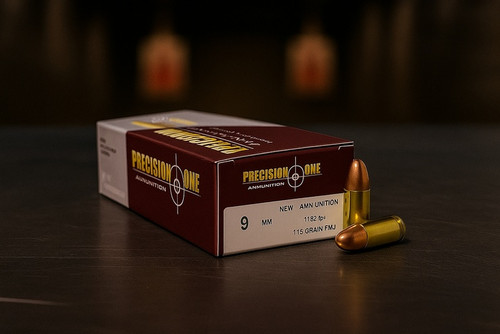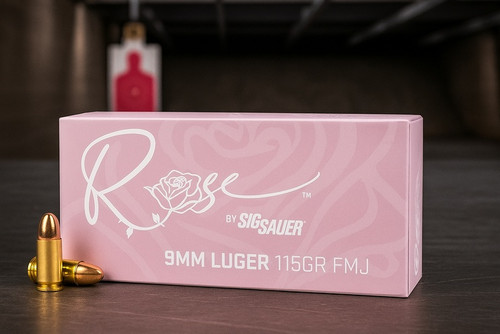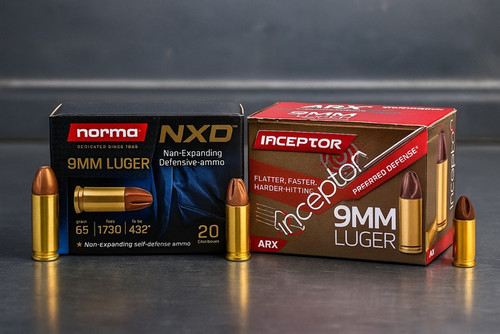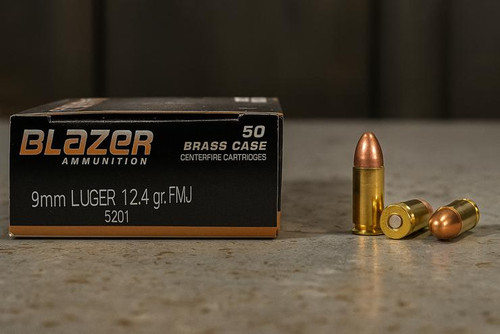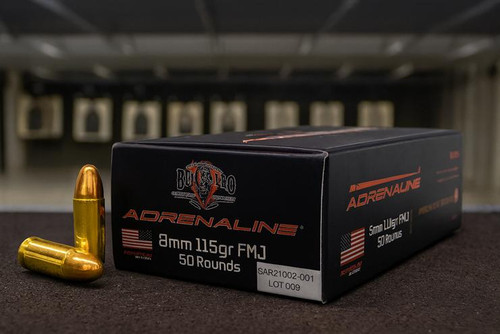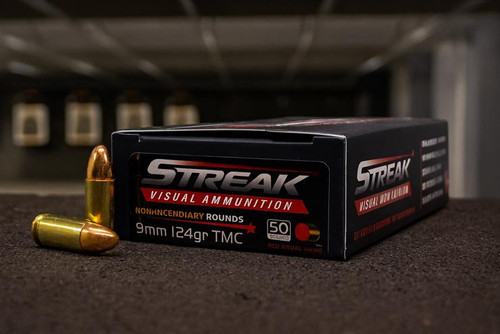YES. It matters.
Few things will get you laughed off a firing line faster than unironically calling an AK-47 magazine a “banana clip.” It’s pants-on-head stupid and a dead giveaway that you enjoy the taste of paint chips.
Okay, maybe that’s a bit harsh — but the point is, if you’re serious about using firearms at all, proper terminology is important. You need to know the difference between a clip and a magazine. This is partly so you don’t look dumb, and partly because you need to know what you’re looking for when you go shopping. If you buy a bunch of stripper clips online hoping to feed those directly into your rifle and start firing — you’ll be sorely mistaken (and maybe injured).
But clips and magazines both have their places, and they take many forms. So let's keep you out of trouble and nail down the differences. Here’s the unadulterated gospel of clips vs. magazines.
TOP: A stripper clip loaded with 10 rounds of 5.56x45mm ammo is set to feed an AR-15 magazine. Note the loading “spoon” that connects the clip and mag is missing. BOTTOM: Magazines in different shapes, dictated by the rounds they hold.
Clip vs. Magazine, Defined
The words clip and magazine are (incorrectly) used interchangeably. The fact is that they’re separate, distinct tools. Yes, they have similar functions, but they’re distinct enough that using the terms interchangeably is not correct.
Let’s set the record straight. Here’s the difference:
- Clip: A device that holds loaded cartridges, for the purpose of loading into either a firearm with an internal or permanent magazine or a detachable box magazine.
- Magazine: A device that holds bullets and is inserted into a firearm to feed it. In our case, however (and in relation to clips) we’re talking about detachable box magazines, not the aforementioned permanent or internal mags.
Now, let’s all try to remember that.
Detachable box magazine, on a Yugoslavian M70AB2 variant of the AK series of rifles. When one magazine is empty, the operator simply removes it and replaces it with a full mag.
What’s a Magazine?
In the gun world, a magazine or “mag” is simply a contraption that’s used to hold ammo. For the most part, firearms are made either with their own proprietary mags, or use proven existing mags.
For example, there are LOADS of AK variants, and almost all use the same magazine. Some, like the Czechs, got cute and created their own for the VZ.58 series, but that’s another ball of wax.
The term magazine actually predates the magazines we’re used to seeing today. Back in the day, a magazine was where cannon balls, powder, fuses and the like were held in a fort or other emplacement. So, the term makes a lot of sense. A magazine is a place where you keep ammo — whether it’s tons of iron and powder, or a few rimfire bullets.
Banana “Clips” (AK Magazines)
Many magazines are curved or bent, matching the geometry of the rounds that go into them. Perhaps the most famous magazine, that of the AK-47, has a nice smooth curve, earning it the wildly inaccurate moniker “banana clip” (see below).
Actual photo of a “banana clip” — not anything that’s inserted into a gun. (Source: baysidebrushco.com).
If you place the AK’s 7.62x39 bullets side by side on a table, they don’t lie in a straight line — they curve. Hence the bend in the magazine. The same can be said for the AR-15 and its 5.56x45mm round. Although the rounds look straight, there’s a slight taper to them, which gives the AR mags their shape and geometry.
Odd Types of Magazines
Some mags are wacky looking, like that of the Russian WWI machine gun, the DP-27 (below). Its unique pan mag fed the gun in a radial fashion. It was interesting — but still effective.
DP-27 with pan-fed mag. (Source: en.wikipedia.org)
There’s also the magazine with the OPEN SIDE on the Chauchat, a French abomination that was so bad that it probably killed more troops by clearing malfunctions than it did enemies.
(Source: www.firearmsnews.com)
Detachable Box Magazine
Now, on to more specifics. Magazines are either detachable or permanent/internal. “Detachable box magazine” is a pretty accurate term — they’re boxes that hold ammo, and they’re detachable from the gun.
Detachable box mags are a huge advantage for soldiers and shooters. When one runs dry, you simply replace it with a fresh, fully loaded mag and you’re back in action. With this setup, you can carry multiple loaded magazines and make reloading a whole lot faster. Before these, you had to either stuff an internal mag with individual bullets, or reload your musket in a process that’s laborious and tedious even when NOT under active enemy fire.

Magpul Pmag For Glock 19 15Rd Black Magazine
$14.95
Magpul Pmag
Prices accurate at time of writing
Here’s where the lines get blurred — some magazines must be charged (loaded) manually (one at a time by hand), while others can accept stripper CLIPS that are loaded with ammo, which makes loading the magazine faster. Both detachable box magazines (like the AR-15/M16’s) and internal/permanent mags (like the Mosin-Nagant) can accept stripper clips or be reloaded manually.
Internal/Permanent Magazine
We call these mags internal/permanent because they’re built into the gun (most often on the inside). They’re not replaceable or removable like a detachable box magazine, and must be reloaded, either by hand or with the aid of a stripper clip.
Internal/permanent magazine on a Mosin-Nagant rifle. With the bolt open exposing the magazine, clips holding five rounds of the Nagant’s 7.62x54R ammo were slid into the top of the gun, and shoved down into the mag by the thumb.
In general, this type of magazine predates the detachable box mag but is still hugely prevalent today. Most every bolt-action hunting rifle has an internal mag that’s not detachable, although more and more are going towards detachable box mags.
Tube Magazine
A tube mag holds rounds in a row, most often underneath the barrel of the gun. They’re most commonly associated with lever-action rifles. Some hold upwards of 20 rounds, making them the original “high-capacity” magazines. They’re fed manually, usually one at a time, through a loading gate in the firearm’s receiver.
(Source: en.namu.wiki)
NOTE: The term “high capacity” is actually a misnomer. For instance, the AR-15 magazine was designed to hold 20 and 30 rounds as standard, which is why a 20- and 30-rounder are actually considered “Standard Capacity” magazines. The term “high capacity” was devised and implemented by politicians to vilify certain kinds of guns.
Tube mags are extremely reliable and safe, provided you use either polymer- or blunt-tipped ammunition in them. Because the bullets rest in a line, the tip of one bullet rests on the primer of the one in front of it. This can be a problem in centerfire cartridges (where the primer is in the middle). There have been cases of pointed bullets detonating the primer (and thereby the bullet in front of it) due to the gun being dropped, or even from violent recoil. That’s why it’s best (with tube mags) to use ammo with either a flat point or a soft polymer tip, not a pointy FMJ bullet.

Promag For Glock 43 9Mm 50Rd Drum Poly Magazine
$124.99
Promag
Prices accurate at time of writing
Drum Magazines
Drums are the same as detachable box mags, but they spiral around like a snail’s shell to offer greater capacity in a length similar to a standard detachable box. The downside to these is because of their upside — by carrying extra ammo, they’re often much heavier than regular box mags.
A Romanian AK drum mag. This one holds 70 rounds, more than doubling the capacity of the standard AK mag, but it’s heavy. These are most often seen with general-purpose machine guns (GPMGs) like the AK-based RPD than the standard AK rifle.
Rotary Magazines
No, these aren’t the mags preferred by your local charitable service organization, but rather a neat way to hold a decent number of bullets in a compact space. Rotary mags are stuffed from the top by hand, and as bullets are loaded, the previous one travels down a path where it curls downward and ultimately back up toward the top. Think of the way a snail’s shell rolls back on itself.
Diagram of a rotary magazine. (Source: blogger.googleusercontent.com)
Most commonly, you’ll find a rotary mag in the legendary Ruger 10/22 rimfire rifle. The 10/22 is hugely popular with a massive aftermarket and millions of guns sold. Part of the gun’s success is its extremely reliable rotary mag.
There’s a downside, however. Most rotary mags, while compact, have a limited amount of real estate and are limited to 10 or so bullets. Carrying more ammo in a rotary mag would mean the mag has to grow in all directions, making the gun bigger. In that case, it’s better to go with a box mag, and there are scores for the 10/22. If you want more than 10 rounds in your 10/22, it won’t be in a rotary mag.
Bonus Wacky Magazine: Helical!
Some items in the firearms world are obviously pet projects.
The Calico with its bizarre helical mag on top. (Source: www.thefirearmblog.com/)
The helical mag is the answer to a question no one asked. It feeds the gun from the top like a tornado and spits empties out through the bottom. It kinda makes sense by working with gravity instead of against it. But perhaps too many folks are too invested in traditional bottom-feeding mags to make the helical mag more widespread. Plus, this thing makes the gun majorly heavy on the ass-end, rendering the whole thing a bit unwieldy.
What Is a Clip?
Clips are in the same ballpark as magazines, but with one key difference — they feed a magazine, which (as we’ve already learned) feeds the gun. In other words, they hold bullets and load them into a magazine, whether internal/fixed detachable. But clips do not directly feed the chamber the way a magazine does.
Stripper Clips
The most common kinds of clips are called “stripper” clips. Hold your bad jokes — we’ve heard them all.
They’re called this not because of their lax morals and agility in high heels but because you strip the bullets off of the clips to get them into magazines. This is most often accomplished with a downward shove or push of the thumb.
LEFT: 5.56 ammo on stripper clips. RIGHT: SKS stripper clips.
If stripper clips seem like a somewhat necessary middleman, that’s because they are. They used to get lots of attention and use before operators and shooters started carrying loaded mags on their person, but now they’re relegated to those with SKS rifles and other guns with fixed internal magazines.
Rifles aren’t the only thing that feed from stripper clips, however. Check out the dude loading more rounds into an anti-aircraft gun from a huge clip. (Source: www.capelbattery.com)
Loading these guns without stripper clips is a one-at-a-time affair, so the clips give you a definite advantage when you can just zip 10 rounds into the gun with the push of your thumb. It’s still not as handy or fast as simply yanking out an empty detachable mag and slamming another, fully loaded one home.
En bloc Clips
These are some of the most iconic clips, which were intimately attached to the M1 Garand, or what General George S. Patton called it “the greatest battle implement ever devised.” The M1 Garand was the standard-issue rifle for American troops in WWII, and gave us a distinct advantage over the Axis powers in that it was a semi-automatic arm instead of a bolt-action rifle.
M1 Garand en bloc clip in the top of an M1 Garand. (Source: www.usconcealedcarry.com)
Feeding a semi-auto is a bigger task than a bolt gun, so a clip was devised to hold the Garand’s 8 shots of .30-06 in a neat package that was ready to be shoved into the gun when a soldier ran dry. As the shooter fired the eighth and final shot, the clip was ejected with a now-iconic “ting!” sound, alerting him it’s time to grab another clip and shove the bullets home.
Empty Garand en bloc clips.
The M1 Garand isn’t the only gun to have been fed by en bloc clips, but it’s certainly the most well-known. The Garand’s internal magazine could also be fed or topped off by adding bullets one at a time.
Bonus Semantic Correction: Shells vs. Cartridges vs. Bullets
Now that we know the difference between the terms “clip” and “magazine” — let’s clear up some more terminology. What do we call the things you load into magazines?
Shells? Bullets? Rounds? Cartridges? The correct answer is all of the above, depending on what you’re talking about.
- SHELLS: Ammo for shotguns only — not for handguns or rifles.
- BULLETS: The actual projectile fired from the gun. However, in today’s language, “bullet” is more or less a stand-in for the term “cartridge” which describes the total loaded round of ammunition.
Of course, no one says, “Hey Bubba, pass me some more of them cartridges…” Unlike the terms “clip” and “magazine,” “bullets” or “ammo” work fine as interchangeable terms for “cartridge.”
Please stop calling loaded handgun and rifle cartridges “shells.”
Final Thoughts
Clips ain’t mags and mags ain’t clips.
Clips hold bullets together until they’re ready to be loaded into a magazine (whether detachable or fixed inside of a gun). Magazines carry the ammo and are themselves inserted into the gun. It’s pretty simple once you get the gist of it.
Speaking of getting stuff, it's probably high time to start buying new stuff for your gun. At Pro Armory, you can get everything you need to improve your shooting experience — all at a price you can afford.
Time to reload? Grab some magazines and some ammo to fill them today! We even have ammo with stripper clips, if that’s your thing.









